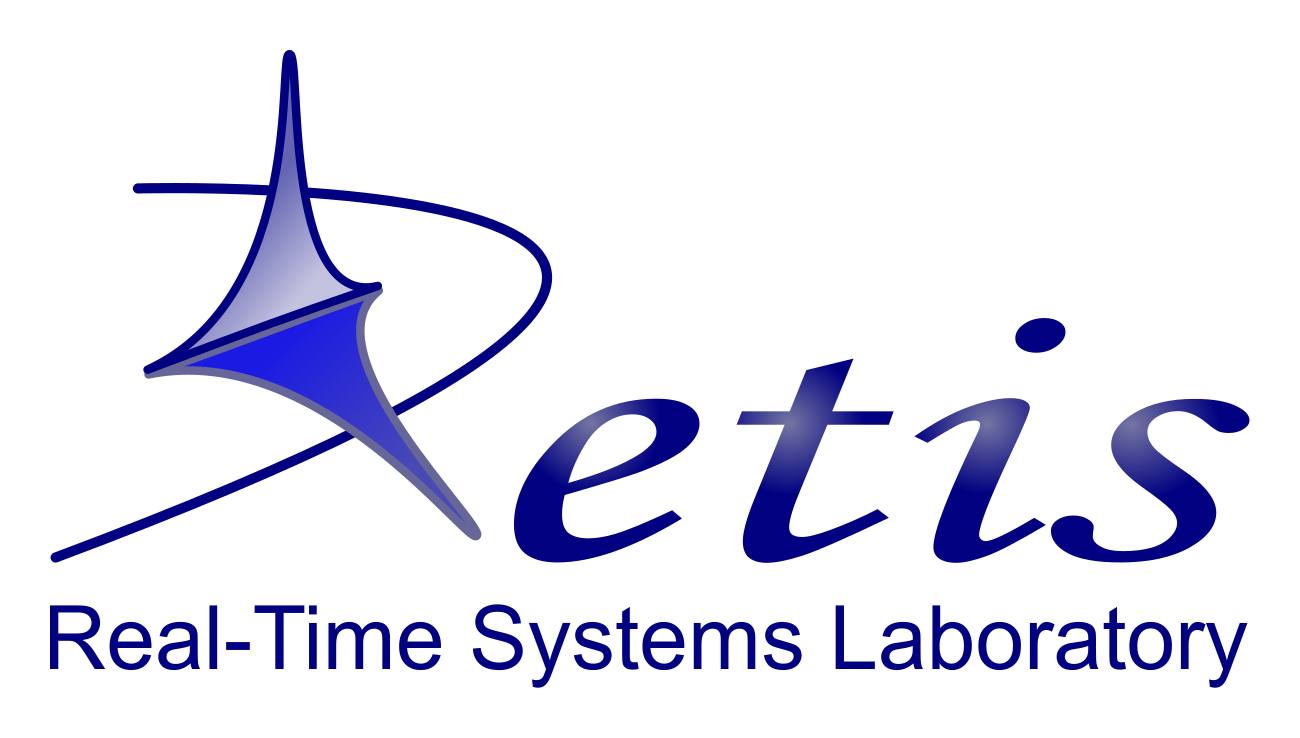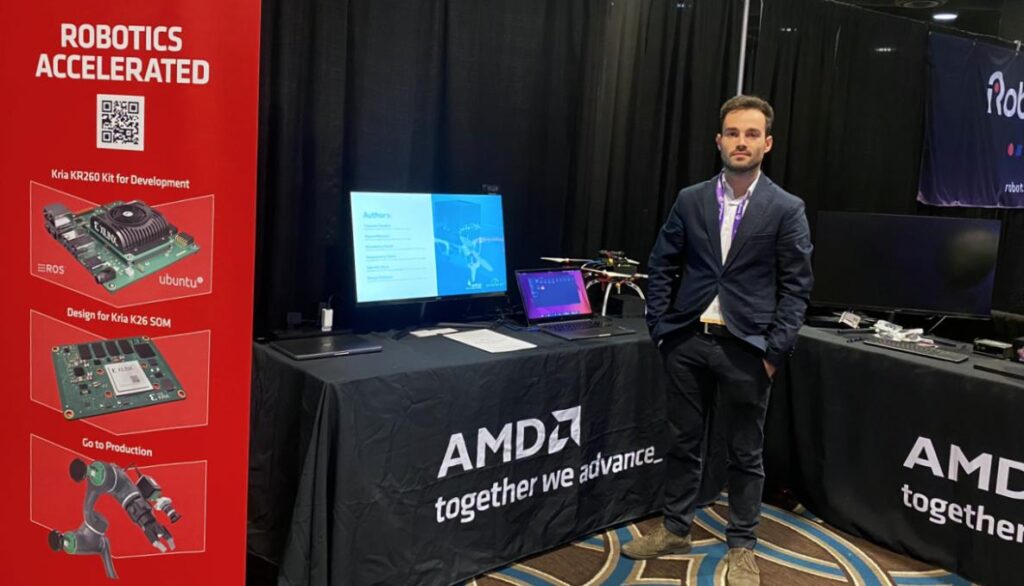Edoardo Cittadini, a PhD student at the RETIS Lab, was invited by Advanced Micro Devices (AMD Xilinx) of Santa Clara California, to present an implementation of his research at the ROSCon 2023 international conference in New Orleans, Louisiana, one of the world’s leading robotics conferences, the most prominent one on the ROS platform (Robot Operating System).
The invitation of strong interest to AMD, allowed the doctoral student to present the results of the work “Supporting AI-powered real-time cyber-physical Systems on heterogeneous platform via hypervisor technology“, published in the scientific journal Real-Time Systems by Edoardo Cittadini in collaboration with Alessandro Biondi and Giorgio Buttazzo, professors of the Embedded Systems area, Giorgiomaria Cicero, research fellow and Mauro Marinoni, technical expert of the Lab, the result of a collaboration between the spin-off Accelerat Srl and the RETIS Lab, which adopts the results of research activities conducted by Edoardo Cittadini on the CLARE Software Stack owned by the spin-off.
AMD wanted to present in its platinum promoter booth at ROSCon 2023 the demo created by Edoardo Cittadini as an excellent example of the potential of the company’s range of products, as the research results show an application scenario in which the safety and security properties of AMD’s multi-domain platform are enhanced, in the presence of mixed-criticality applications.
The demo validates the approach proposed by the Ph.D. student through the use case consisting of a self-driving vehicle, an unmanned drone capable of tracking moving targets by tracking them using a neural network that takes advantage of the hardware acceleration capabilities provided by the platform. A semi-autonomous quadcopter powered by the AMD Kria KR260 platform and software stack, or a group of programs working in tandem to produce a common target, called CLARE produced by Accelerat Srl, presented as a complex ROS-based application that requires high levels of security and cybersecurity.
The study stems from the need for a secure architecture for mixed-criticality application development due to the increasing use of machine learning algorithms in critical systems. This raises serious questions regarding cybersecurity issues and requires new architectural approaches to secure these properties. To address these issues, an architectural solution was devised that leverages heterogeneous platforms and virtualization technologies to support artificial intelligence-based applications consisting of different modules with mixed-criticality and security requirements.
The proposed solution allows multiple ROS execution domains, with different levels of security and protection, to run together on the same chip, leveraging strong software- and hardware-based isolation. Multiple instances, based on different operating systems such as Linux and FreeRTOS, another popular real-time operating system kernel used in embedded devices, can thus run simultaneously in isolation, communicating safely, securely, and transparently.
The demo uses a next-generation hypervisor, virtualization software that allows several systems to run in strong isolation by sharing the same hardware platform, part of the CLARE stack produced by the spin-off Accelerat Srl, which leverages the security features of AMD architectures to create two isolated execution environments: a high-performance domain running deep learning algorithms (neural networks) in the Linux operating system and a secure domain running control and monitoring functions in an operating system for critical real-time applications.

